Adult chickens and chicks need a warm environment for remarkable production and healthy growth. Also, chicks need to remain with the mother hen to receive sufficient warmth until they reach full maturity. So does separating chicks from their mother affect their growth? This article elaborates on how long chicks need a heat lamp, among many other insights. Stay with us as we delve deeper into this topic.
Do Chickens Need Heat in Winter?
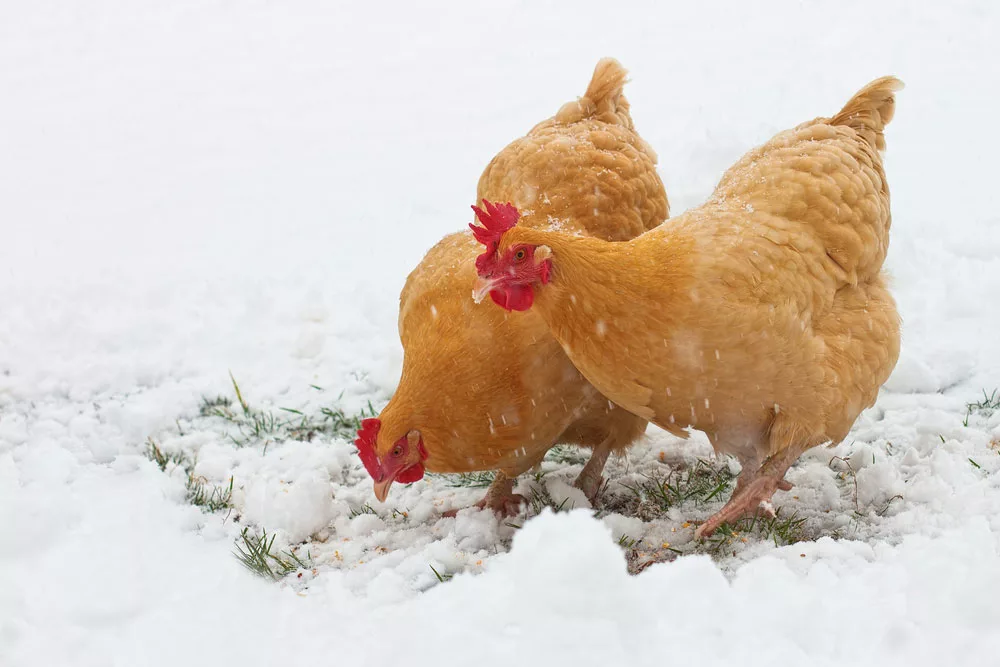
Chickens feed during winter.
Although they can endure temperatures below zero, grown chickens prefer a relatively warm environment. Ideally, chickens thrive well in temperatures between 70 to 75℉.
So, during winters, you might experience a sharp decline in egg production due to cold weather. At this time, their bodies will prioritize maintaining their critical functions. Hence, you must take certain steps in the winter to ensure your hens stay warm and productive.
For instance, keep the coops warm and dry but not too hot to enhance laying and avoid sickness. Remember, an excessive increase in temperature might lead to less egg production or even reduced appetite for the chicken.
The best practice is to have just one heat source, such as a heat lamp. It will allow the chickens to freely wander toward or away from it to control their core temperature.
Are My Chicks Sufficiently Warm?
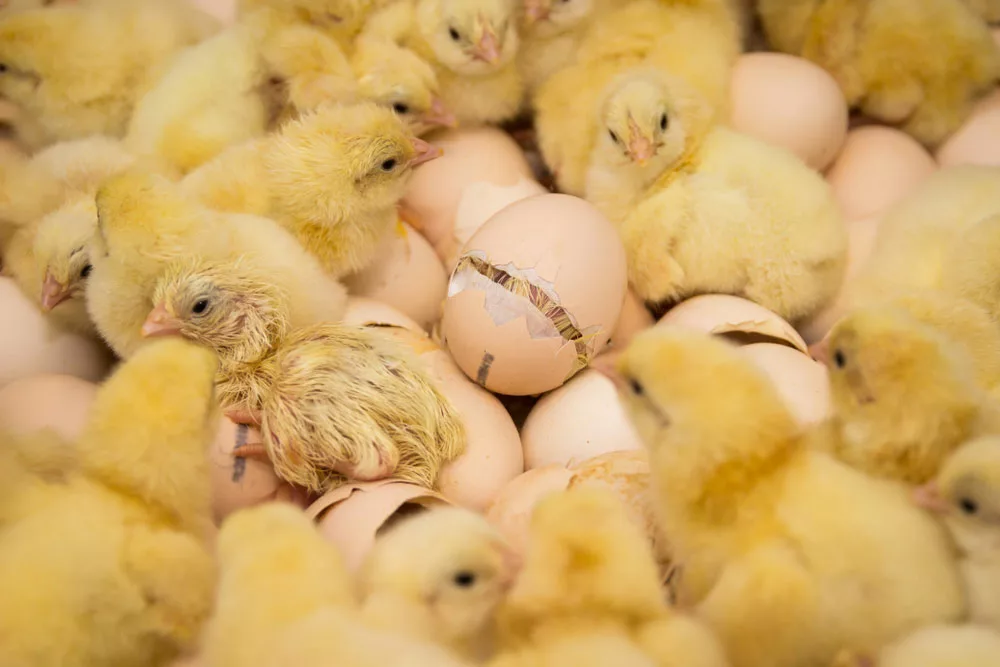
A brood of small chicks.
The easiest way to determine whether your chicks are sufficiently warm is to watch how they behave.
Also, it helps if you use a thermometer to gauge their temperatures. Ideally, the surrounding should not be too cold or too hot. If you observe abnormalities in your chicks’ behavior, it’s a clue they are not having a good time.
Let’s look at these signs in detail.
How Chicks behave when too Hot
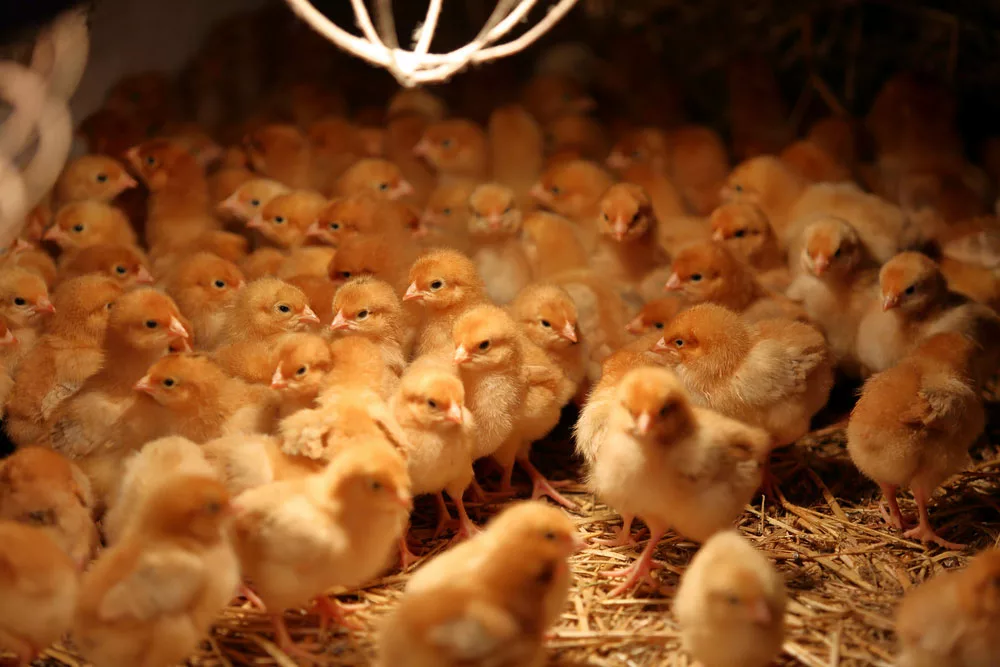
Chicks Cramped together.
- The chicks tend to flee to the chicken coop’s furthest corners.
- Also, they will experience a decline in appetite and move widely apart, far from one another.
- Besides, they’ll attempt to cool down by panting and raising their wings over their bodies.
- Lastly, chicks that are too hot will be silent, unmoving, and perhaps have drooping heads.
How Chicks behave when too Cold
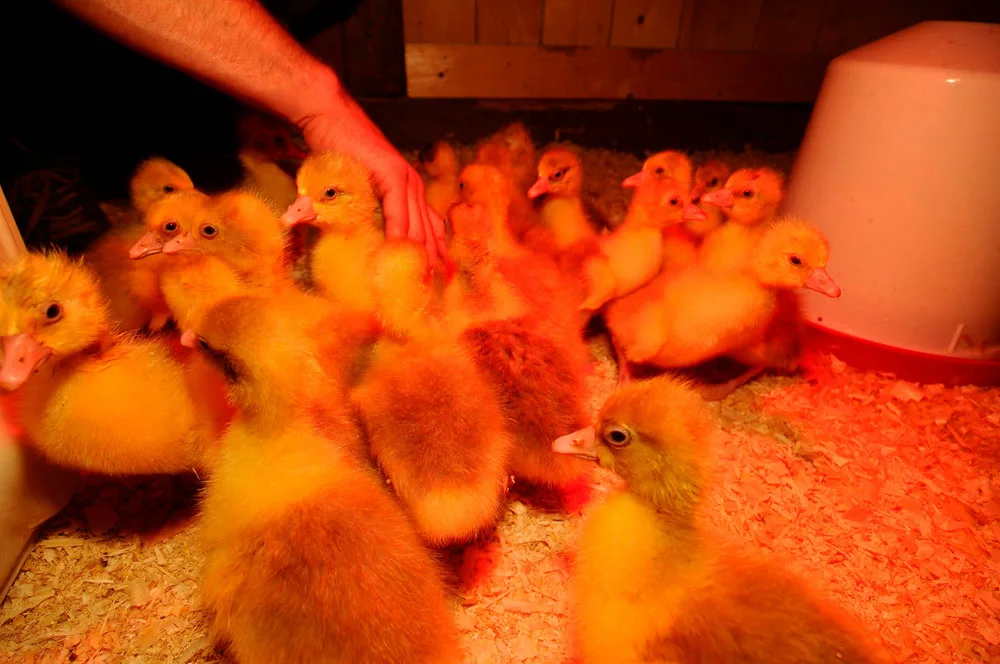
Chicks gather around a heater in cold weather.
- Cold temperatures cause the chick feathers to appear inflated.
- Also, cold chicks will gather tightly together, close to a heat lamp or any available heat source.
- The chicks won’t play around, and they will make a lot of noise as a sign of discomfort.
How Long Do Chicks Require a Heat Lamp?
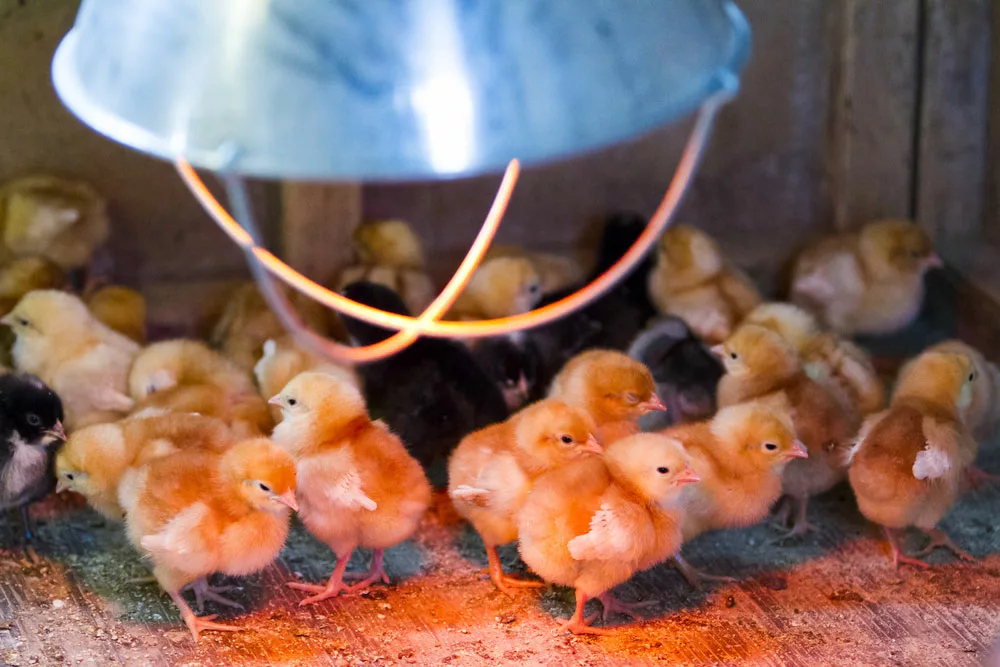
Chicks around a heat lamp.
Keep chicks in a heated environment (warm) until they are four to six weeks old. Further, you must keep the heat lamp for more than six weeks in winter. After this period, the chick can grow faster even with outdoor temperatures and won’t need much of a heat lamp.
However, it is simpler to raise chicks in the summer than in the winter since your home will be warmer. Conversely, a heat lamp in winter is necessary, especially if you raise the chicks without their mother.
Alternatives to Heat Lamps for Warming Chicks
Light bulbs, heaters, and white light sources effectively keep chicks warm. However, consider alternatives to heat lamps as they have some drawbacks. Several possibilities are as follows:
Keep A Large Flock
A bigger group of chicks can maintain body heat more efficiently than a smaller one. Therefore, keep many in one brooder to keep the chicks warm without needing supplemental heat.
Use Thick and Insulated Beds

A chick stands in bedding with fresh farm eggs.
You can realize the ideal temperature If you use good, soft, thick, but not very deep bedding. An example of such materials would be pine shavings. Cedar shavings can also be handy in keeping your brooding space warmer than the ambient temperature.
Hot Water Bottles
You should consider using this method when caring for a sick chick or when your heater breaks. However, it’s a temporary remedy since you have to add warm fresh water every time.
Also, to prevent the chicks from immediately accessing the water bottle, you must wrap the bottles with towels or other materials.
Use Heat Pads
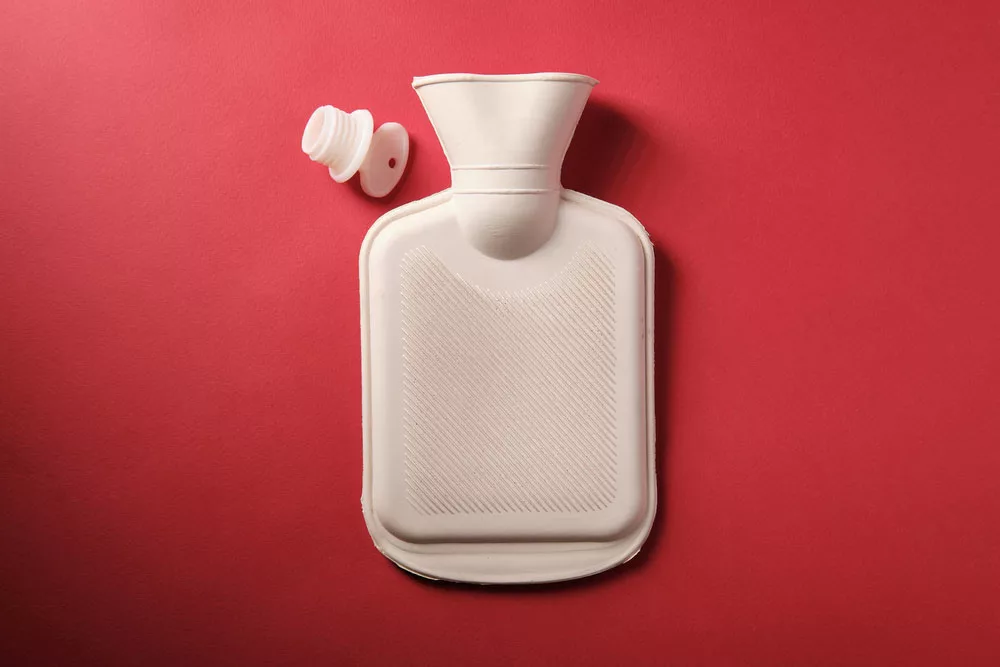
A heating pad.
You can use an electrically heated pad for smaller chicks to improve the brooder temperature. Also, fasten the pads to the wall so the brooder can warm evenly.
Have A Broody Hen
Having a broody hen to take care of the chicks is the best and most efficient way to keep them warm. Remember that chickens are warm-blooded. Hence, their radiant heat is better than heat bulbs as the mother hen maintains its temperature at the same point.
How to Safely Bring Chicks Outside to Play
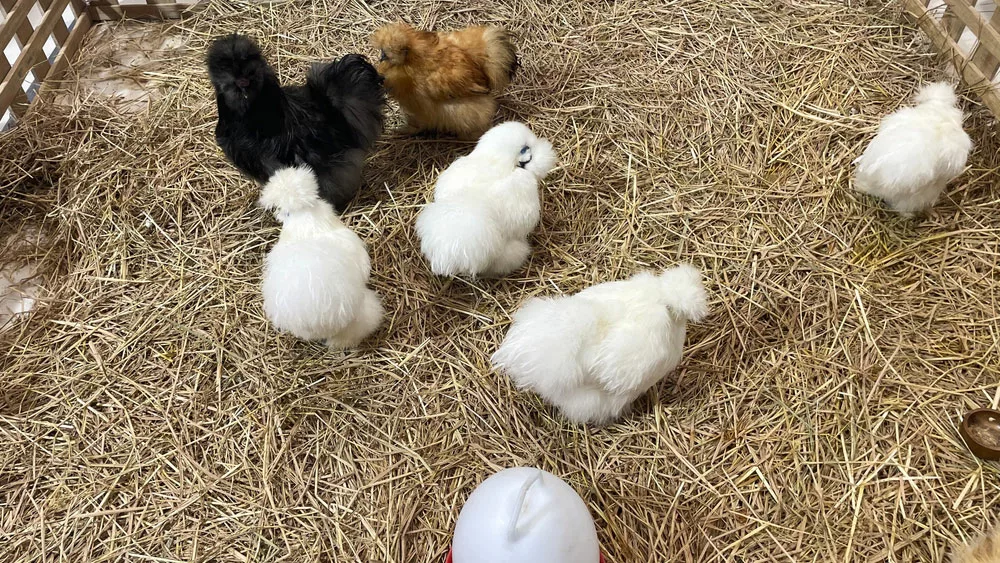
Bantam chicks.
Let’s now consider the safety precautions when taking your chicks outside to play.
- First, you must cover the top of the playpen area to keep predators at bay.
- Also, keep watch of the baby chickens at all times. Consider bringing them inside if you get too busy to observe them.
- Always ensure there are no significant gaps through which they may flee or into which predators could squeeze in.
- Further, provide some shade for the chicks by covering the top of the playpen with a sheet of cardboard.
- Finally, maintain a supply of food and water for them while they are playing outside.
Safety Measures for Heat Lamp
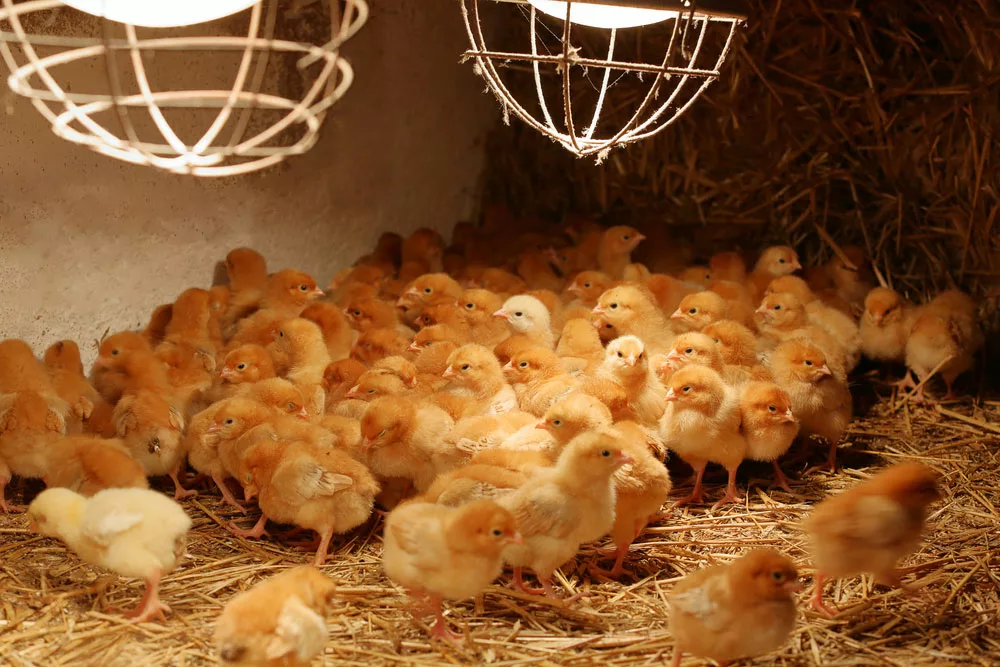
Newly hatched chicks near a heat lamp.
Here are some guidelines for safely using a heat lamp with your chicks.
- A ceramic socket for your reliable heat lamp would be best since plastic ones might melt.
- Secondly, use only high-quality, functional items, and always adhere to the manufacturer’s recommendations.
- Don’t use polytetrafluoroethylene-coated bulbs because they produce hazardous fumes when heated.
- Ensure you have a safe heat source (preferably one out of reach) because chicks may jump and fly as early as two weeks old.
- Always hang your heat lamp on a metal chain instead of a rope or cable. Also, keep away any flammable material from the brooder heat lamp.
- Besides, you should never position a heat source near beds or water troughs.
- In addition, a wire guard surrounding the chicken heating lamps is handy in preventing a fire in case of an accident.
- Use only purpose-built heat lamps with reliable fittings and fasteners, and make sure your lamps and bulbs have the right wattages.
FAQs
Do Baby Chicks Need a Heat Lamp 24 Hours a Day?
Despite not requiring light 24 hours a day, chicks do need heat. So, if the lamp is just a heat source, the chicks can have it on for 24 hours.
How Long Do Ducklings Need a Heat Lamp?
For ducklings, you can only use a heat lamp for shorter periods (by a couple of weeks) compared to chicks. But in the sixth week, they ultimately don’t require heat.
Brooder Plate vs. Heat Lamp: Which One Is Better?
The brooder plate is better and much safer for the chicks than the heat lamp. Fundamentally, a chick brooder plate’s temperatures cannot rise beyond 125 degrees Fahrenheit. On the other hand, a brooder lamp features a bulb that can start a fire, especially if its cover falls off.
Summary
As a poultry farmer, you need to know the perfect condition to raise your chicks faster and safely. Thus, even in the worst weather conditions, like winter, you must adapt to warmth-providing methods such as heating lamps or wood shavings. But while using lamps, observe the safety measures to avoid tampering with the chicks. That’s all for now on how long chicks need a heat lamp.
